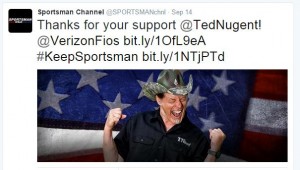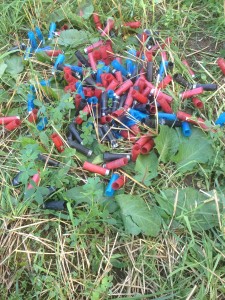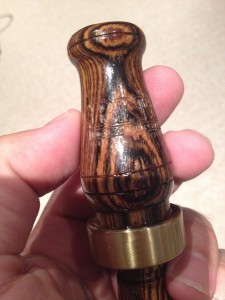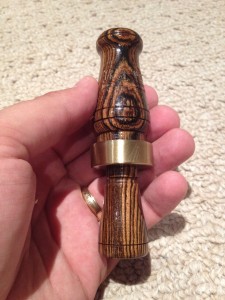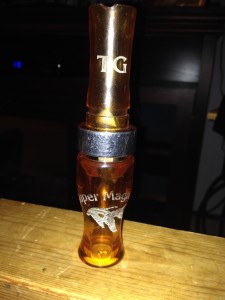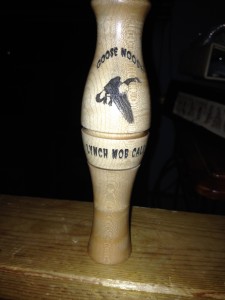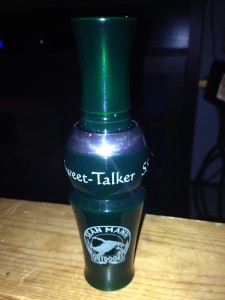It broke across my social media feed on the afternoon of September 15th:
“Sportsman Channel Suspends Hunting Show Amid Federal Poaching Allegations”
I swear I got an instant headache.
Apparently, The Syndicate, a show hosted by one Clark W. Dixon of Mississippi was alleged to have been party to over two dozen illegal acts of poaching in Alaska, some of which were later edited to appear as law-abiding hunts and were subsequently shown on the program. The full release that I received can be found here and the Sportsman Channel’s response can be found here.
This is not the first time this has happened in the hunting industry, and unfortunately, it probably won’t be the last time.
I have no affiliation with any of the parties involved, so I only know what I’ve researched. The production companies have commented, and the Sportsman Channel has commented. To date, I can’t find any comments or on the record statements made by the alleged perpetrators of the illegal acts, but I don’t particularly care at this point, because there is always some form of excuse or admission of guilt bracketed by a ‘misunderstanding’, or whatever, and it makes me weary.
Sigh. Can I just go hunting with my friends now and not have to worry about crap like this?
No, I can’t because I have a real problem with this ‘celebrity hunter, body-count, above-the-law, hero-shot’ mentality and what it does to hunting in the public perception.
The problem here is two-fold. Of primary importance is that the non-hunting public holds these acts as their standard of what they deem hunting to be. They presume that if a ‘professional’ hunter is poaching and hunting unethically, then all the non-professionals must be doing it too. This is of course an incorrect stereotype of the most egregious variety, but it is a pretty natural response. I’ve heard many hunters make the same manner of stereotype about ‘anti-hunters’ or ‘vegetarians’ or ‘environmentalists’ or anyone else that may for some reason oppose hunting. For the irony-impaired, it is pretty hypocritical. Still, it happens and the hunting community already has a big enough image challenge on their collective hands without public figures in their own fraternity buggering things up. You can get all self-righteous and say “Screw the public! Hunting is my right!” but that does not help and in reality is not really a true statement anyways.
If it were your right, you would not have to buy game licenses and be subject to hunting regulations.
So instead, every time this happens that a hunting ‘celebrity’ is found on the wrong side of the state, provincial, or federal game laws (I’m looking at you Jeff Foiles, Ted Nugent, and William Spann just to name high profile cases in the last five years or so) everyday hunters have to bear the burden of public opinion and we are forced into either defending our own actions which for the most part should be pretty clean, or we have to come up with clumsy and ineffective rationalizations and explanations. Just Google “professional hunter poaching” and the scores of articles you will find is extremely depressing.
So to the professionals and celebrities that keep screwing up, thanks for making us regular guys who just want to hit the woods and wetlands have to work harder to keep doing what we love. Trust me it is harder for us since we are without thousands of dollars in production values up our sleeves, and we typically do not have a team of outfitters and production companies and various sponsors backing us.
But secondarily, and of a more insidious manner, is that this brings the ‘support a fellow hunter argument’ out. This mentality embraces a fallacy so grand that it borders on the comical, and it severely runs the risk of ‘normalizing’ breaches of hunting regulations. I refused to weigh in on the whole ‘Cecil-mania’ of last month or so because primarily, to my eye, that simply did not involve hunting, it was poaching out and out from all accounts and it was more or less the matter of a private transaction that was on the face of it, grossly illegal. That it became a public matter occurred in due course, but it did not start out that way, and in fact it was nearly a month after the actual poaching of the lion before the media picked it up. It also falls well outside my bailiwick in that I have no real ties to African Safari hunting, or really trophy-hunting in general. Much has been written on it by others more knowledgeable in the field than I about this whole sloppy mess, so I’m just going to more or less leave it alone.
But where all that nonsense in Zimbabwe dovetails nicely with the argument I’m making above is that many, particularly the most vocal, in the hunting industry felt that the Cecil issue when it occurred, as well as the current “celebrity-hunter-caught-poaching” scenario I’m referencing here should somehow be excused and that the greater hunting community at large should ‘show support’ to the perpetrators in some rally of common-cause-collectivism among sportsmen and women everywhere.
Well, to use a cliché, that dog won’t hunt.
Because, at the risk of being unpopular (which has not stopped me before) the dentist who shot that lion is no more of a hunter than the accused at The Syndicate should their allegations be proven, or any of the others named above who have been convicted. They are by definition poachers and thus fall outside the law, to say nothing of what the greater definition of ‘hunter’ actually is or should be. Recreational hunting at its core involves regulations and the explicitly stated adherence to those regulations. To do less constitutes an act of poaching, plain and simple and if you do it, there are consequences.
This is not a concept fraught with grey areas. Ethics are one thing, and could (I stress, could) be subject to debates, but the law is clear in that respect. If it is legal, you can debate the ‘ethic’. If it is prohibited by a law and due process convicts you, then there should not be a granted chance for debates. Period, full-stop.
(That said, the Sportsman Channel’s release regarding The Syndicate’s situation stresses that they stand for “ethical practices in hunting” but they still align themselves with and praise the support of convicted poacher Nugent in this recent tweet, so maybe it really is all about ratings and marketing, and this is more nebulous than I had initially thought.)
Now there is little doubt in my mind that the public figures in hunting do genuinely love the tradition as much as you and I do. I’m sure they are sincere in their support of conservation organizations, and they might even be decent men and women to sit down across from, crack a beer and swap stories with. They are likeable, which is part of their draw to be certain. But by nature of their public persona, they are almost obligated to comport themselves to a higher (and arguably, the highest) standard with regards to both those shadowy areas of ethics and fully illuminated areas of the law proper. Many of them do it correctly, and the bad apples do not spoil the bunch out of hand.
My primary question is, why are there bad apples to begin with? Is there no validation method or process in place to vet the people who do this for a living? Surely some of this graft can be weeded out?
My hunting mentors repeatedly stressed to me: Don’t take a shot you can’t make. To turn that into a metaphor for this whole messy, PR nightmare perhaps the approach of the ‘celebrity hunter’ would be to not do anything that you would not normally do if you were not being filmed. That is to say, if the goal is to create kills on camera so that you can somehow self-aggrandize your ego, or keep your sponsors happy, or increase your ratings, which would probably also achieve the prior two desires, and you show no regard for what game laws state, then it may be best to not pull the trigger. If you would still pull the trigger after that…then I can’t help you in re-examining what motivates you to hunt.
But rest assured, you are a bigger part of the problem than anti-hunting groups could ever hope to be.

